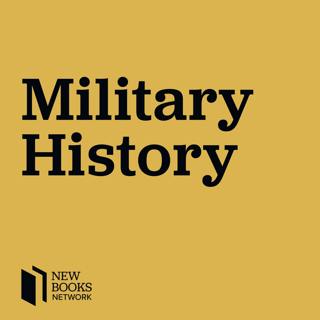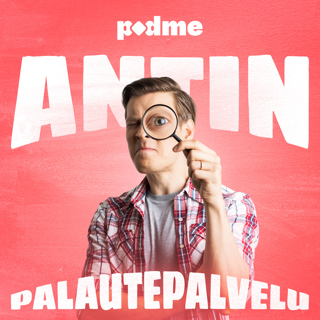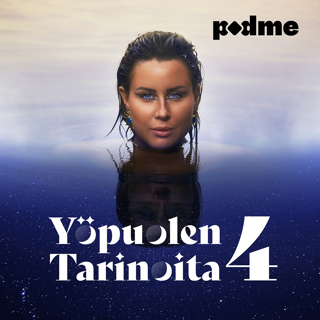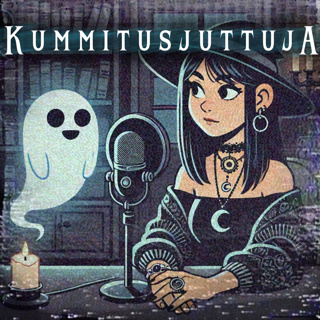
Michael Kranish, “Flight from Monticello: Thomas Jefferson at War” (Oxford UP, 2010)
The past is always with us, but it’s really always with politicians. Once you put yourself up for office, and particularly national office, everybody and his brother is going to start digging into your past to see what kind of “dirt” they can find. It’s true now, and it was true when Thomas Jefferson was running for president in the late eighteenth century. Jefferson had had an eventful, largely public life, so there was a lot of “material” to be mined by his foes. Most of the accusations “didn’t stick,” but one that did was that he was a coward. Jefferson was the governor of Virginia during a good portion of the Revolutionary War and, as such, charged with defending the place (and the Revolution) against the British. As Michael Kranish shows in his terrific book Flight from Monticello: Thomas Jefferson at War (Oxford UP, 2010), he had a rough time of it. Jefferson had no military experience, didn’t like “standing” armies, and received only tepid support from his continental allies. The British invaded, invaded, and invaded again. Jefferson fled, fled, and fled again. What was he supposed to do? His political opponents didn’t care if he had no choice but to run or not–the fact that he didn’t stand and fight was enough to prove he was a “coward.” This charge wounded Jefferson deeply and he fought it for much of his life. The episode sort of reminded me of a certain presidential candidate a few years back and (shameful, in my opinion) questions about his military service. Please become a fan of “New Books in History” on Facebook if you haven’t already. Learn more about your ad choices. Visit megaphone.fm/adchoices Support our show by becoming a premium member! https://newbooksnetwork.supportingcast.fm/military-history
1 Heinä 201058min

Heather Cox Richardson, “Wounded Knee: Party Politics and the Road to an American Massacre” (Basic Books, 2010)
Of all the events in American history, two are far and away the most troubling: slavery and the near-genocidal war against native Americans. In truth, we’ve dealt much better with the former than the latter. The slaves were emancipated. After a long and painful struggle, their descendants won their full civil rights. Though that struggle is not yet finished, near equality has been reached in many areas of American life. And almost all Americans understand that slavery was wrong. None of this can be said about the campaign against native Americans. Instead of emancipation, the Indians–or rather those left after the slaughter–were “removed” to reservations where their way of life was destroyed. After a long and painful struggle, many of their descendants are still in those reservations and living in poverty. They struggle still, but are not equal to other Americans by most measures. And many Americans refuse to believe that the U.S. was wrong in killing, sequestering, and impoverishing the native Americans. They are wrong to do so, for we know what happened and why thanks to historians such as Heather Cox Richardson. In her eye-opening new book Wounded Knee: Party Politics and the Road to an American Massacre (Basic Books, 2010) she shows just how calculated, self-serving, and even spiteful the White assault on the Plains Indians was. Despite what they said (mostly to the Indians themselves), the Whites never had any real intention of allowing the Sioux and others to keep their land, maintain their way of life, or even to continue to exist. It was clear to them that the Indians would either become White (meaning would take up farming) or would go. The Whites weren’t exactly cynics; rather they were self-deceiving fatalists. They came to believe that destiny itself compelled them to assimilate or annihilate the Indians. But destiny didn’t destroy the Plains Indians. The government of the United States of America did. Please become a fan of “New Books in History” on Facebook if you haven’t already. Learn more about your ad choices. Visit megaphone.fm/adchoices Support our show by becoming a premium member! https://newbooksnetwork.supportingcast.fm/military-history
3 Kesä 20101h 12min

Fearghal McGarry, “The Rising: Ireland, Easter 1916” (Oxford UP, 2010)
Sometimes when you win you lose. That’s called a Pyrrhic victory. But sometimes when you lose you win. We don’t have a name for that (at least as far as I know). But we might call it an “Easter Rising victory” after the Irish Republican revolt of 1916. The Republicans took over several buildings in Dublin, declared an Irish republic, and then were promptly obliterated by the British Army. Their leaders were executed, their republic disbanded, and their enemies remained in control of the island. They lost. Or did they? Shortly after the disastrous uprising, the Republican cause began to gather force. Its fallen leaders became martyrs to the Irish nation, the idea of a republic grew in popularity, and once moderate Constitutional Nationalists began to fight the British. Within a short three years, the Irish republic was back; in another three years the “Irish Free State”–not exactly independent of London, but much closer than before–was established. In The Rising. Ireland: Easter, 1916 (Oxford, 2010), Fearghal McGarry does a terrific job of describing the complicated ins and outs of the Rising and its impact on Irish politics. The book really shows us the revolt “from below,” that is, from the point of view of those who fought in it. Fearghal is able to gain this perspective because of a remarkable source. In the 1940s, the Irish authorities, knowing that witnesses to the Rising were passing, had the presence of mind to conduct a large survey of participants. They collected well over 1,000 accounts, all of which became available in 2002. Fearghal mines these reports to reconstruct how the men- and women-on-the-street experienced the revolt. The results are remarkable. The Rising appears anew as an event at once tragic, terrifying, and farcical. In hindsight, we can see that the Rising changed Irish politics forever; at the time, amidst the bravery, blood, and rubble, few saw any such thing. Most were just scared. Please become a fan of “New Books in History” on Facebook if you haven’t already. Learn more about your ad choices. Visit megaphone.fm/adchoices Support our show by becoming a premium member! https://newbooksnetwork.supportingcast.fm/military-history
24 Touko 20101h 8min

Jeffrey Reznick, “John Galsworthy and the Disabled Soldiers of the Great War” (Manchester UP, 2009)
You may not know who John Galsworthy is, but you probably know his work. Who hasn’t seen some production of The Forsyte Saga? Galsworthy was one of the most popular and famous British writers of the early 20th century (the Edwardian Era). He left an enormous body of work, for which he was awarded the Nobel Prize in Literature in 1932. But Galsworthy was also what we might call a “public humanitarian,” that is, he used his high profile and influence in a great, good cause. The focus of his effort was disabled solders returning from World War I. We, of course, are well acquainted with the remarkable destructive power of modern weaponry. Not a week goes by (alas) in which we do not hear about a soldier being wounded by mines, grenades, artillery fire or bombs (often of the “roadside” variety). But we also have come to expect that soldier, no matter how grievously wounded, will receive medical treatment that will stand at least a fighting chance of saving their lives. And indeed, many wounded soldiers do survive incredibly severe injuries and return to our world. The generation that fought and suffered World War I–or as they called it “The Great War”–were really not familiar with any of this. Europeans and Americans of the nineteenth century were surely used to wars, but they were generally short and decided by pivotal battles (Waterloo, Gettysburg, Sedan). But the Great War was different. Millions of men lived for years at the “front” and under the shells. Many died there and many more were wounded. Thanks to advances in medical knowledge (and particularly the discovery of the germ theory of disease), a goodly proportion of the wounded survived. This presented a new problem: How to re-integrate wounded men into society? This became Galsworthy’s cause. The course of his efforts on the part of wounded soldiers is detailed with great skill and care by Jeffrey Reznick in his John Galsworthy and the Disabled Soldiers of the Great War (Manchester UP, 2009). Reznick shows us Galsworthy attempting to create the modern infrastructure of veterans’ care: special hospitals, rehabilitation programs, work-transition agencies and so on. And we get to read Galsworthy’s writing on the subject, both non-fiction and fiction. All this give us–or gave me–a new understanding of Galsworthy’s literary work. Galsworthy was a great man. But as it turned out he was greater than I knew. We should thank Jeff for bringing his good-works to our attention. Please become a fan of “New Books in History” on Facebook if you haven’t already. Learn more about your ad choices. Visit megaphone.fm/adchoices Support our show by becoming a premium member! https://newbooksnetwork.supportingcast.fm/military-history
18 Touko 201058min

Andrew Donson, “Youth in the Fatherless Land: War Pedagogy, Nationalism, and Authority in Germany, 1914-1918” (Harvard UP, 2010)
I was a little kid during the Vietnam War. It was on the news all the time, and besides my uncle was fighting there. I followed it closely, or as closely as a little kid can. I never thought for a moment that “we” could lose. “We” were a great country run by good people; “they” were a little country run by bad people. I spent my time building models of American tanks, planes, and ships. I read a lot of “Sergeant Rock” and watched re-runs of “Combat.” My friends and I played “war” everyday after school. Given all this, you’ll understand that I was bewildered when “we” pulled out of Vietnam. How could “we” lose the war when “we” were bigger, better, and righter? It made no sense. All this came to mind as I read Andrew Donson terrific book Youth in the Fatherless Land: War Pedagogy, Nationalism, and Authority in Germany, 1914-1918 (Harvard UP, 2010). As Andrew points out, German children were taught that their nation was great, their cause was just, and their victory inevitable. Their heads were full of heroic tales of soldiers sacrificing themselves for the good of Germany, and they longed to fight for the Vaterland themselves. So when things began to come apart in 1917, Germany’s young people were deeply disappointed. They would not “get their chance.” Rather, they would suffer hunger, humiliation, and defeat. They had hard questions for their mothers, fathers, and the authorities. How could it happen? Who is at fault? And, most importantly, what should we do? As we know, they answered this final question in different and, as it turned out, radical ways. Please become a fan of “New Books in History” on Facebook if you haven’t already. Learn more about your ad choices. Visit megaphone.fm/adchoices Support our show by becoming a premium member! https://newbooksnetwork.supportingcast.fm/military-history
23 Huhti 20101h 4min

Ben Kiernan, “Blood and Soil: A World History of Genocide and Extermination from Sparta to Darfur” (Yale UP, 2007)
Chimps, our closest relatives, kill each other. But chimps do not engage in anything close to mass slaughter of their own kind. Why is this? There are two possible explanations for the difference. The first is this: chimps are not programmed, so to say, to commit mass slaughter, while humans are so programmed. The second is this: chimps do not make their own history and therefore cannot make the conditions conducive to genocide, while humans do, can, and repeatedly have. In the former case, human genocidal behavior is part of our evolved “nature”; in the latter case, it is a historical artifact. After reading Ben Kiernan’s sobering (Yale UP, 2007) I’ve come to believe that it is a bit of both. Much of what we know about the evolution of human psychology and the history of human genocide suggest that we have an ingrained, genetically-encoded, largely unalterable drive to want to kill one another in large numbers. That drive, however, seems to be triggered by particular historical circumstances, these being largely of our own making. In Blood and Soil: A World History of Genocide and Extermination from Sparta to Darfur (Yale UP, 2007), Ben explores the nature of these triggering circumstances by looking at the history of genocide over the past five or so centuries. He finds unmistakable commonalities among modern genocides, primarily in the world of ideology. When modern people begin to believe that there is something sacred about their “blood”–that is, their own kind–and “soil”–that is, the plowed fields that sustain their kind–they have taken the first step toward the creation of the above-mentioned triggering conditions. When they believe, further, that their “blood and soil” are threatened by another “kind,” or they see an opportunity to extend the reach of their “blood and soil,” the conditions are almost complete. All that remains is for elites in the community to mobilize the force necessary to launch a genocidal attack. At this point what was merely necessary for genocide becomes, with the addition of a will and a way, sufficient and our innate genocidal tendencies are enacted. The challenge, of course, is to avoid creating the conditions that foster “blood and soil” ideologies and set us on the road to ruin. Alas, thus far we have not been able to accomplish that important task. Please become a fan of “New Books in History” on Facebook if you haven’t already. Learn more about your ad choices. Visit megaphone.fm/adchoices Support our show by becoming a premium member! https://newbooksnetwork.supportingcast.fm/military-history
12 Helmi 20101h 6min

Julian E. Zelizer, “Arsenal of Democracy: The Politics of National Security From WWII to the War on Terrorism” (Basic Books, 2010)
Historians are by their nature public intellectuals because they are intellectuals who write about, well, the public. Alas, many historians seem to forget the “public” part and concentrate on the “intellectual” part. Our guest today–sponsored by the National History Center–is not among them. Julian Zelizer has used his historical research and writing to inform the public and public debate in a great variety of fora: magazines, newspapers, online outlets, radio, TV–and now New Books in History. Today we’ll be talking about his efforts to bring the historian’s voice to the public and his most recent book Arsenal of Democracy: The Politics of National Security From WWII to the War on Terrorism (Basic Books, 2010) (which itself is a contribution to that effort). The book proves that in the U.S. politics does not “stop at the water’s edge”–not now, not ever. From the very beginning of the Republic, American foreign policy has been informed by a subtle mix of electoral politics, ideology, and institutional infighting. Julian’s book focuses on the most recent episode in this long story–the period from the Second World War to the present. He shows that politics plain and simple had a powerful effect on the major foreign policy decisions of the era: Korea, the Cuban Missile Crisis, Vietnam, Reagan’s volte-face on disarmament, the First Gulf War, and the Second. It is, Julian says, in the nature of our political culture to cross swords and break lances over issues of foreign policy. Never truer words… We also discuss the History News Network and the History News Service. Their webpages can be found here and here. Please become a fan of “New Books in History” on Facebook if you haven’t already. Learn more about your ad choices. Visit megaphone.fm/adchoices Support our show by becoming a premium member! https://newbooksnetwork.supportingcast.fm/military-history
14 Tammi 20101h 7min

Rebecca Manley, “To the Tashkent Station: Evacuation and Survival in the Soviet Union at War” (Cornell UP, 2009)
By the time the Nazis invaded the Soviet Union on June 22, 1941, the Bolshevik Party had already amassed a considerable amount of expertise in moving masses of people around. Large population transfers (to put it mildly) were part and parcel of building socialism. Certain “elements” needed to be sent for re-education (the Kulaks), others to build new socialist cities (Magnitogorsk), and still others back to where–ethnically speaking–they “belonged” (Baltic Germans). Thus when the Germans attacked, the Bolsheviks were ready to move their “assets” out of the way. Sort of. In To the Tashkent Station. Evacuation and Survival in the Soviet Union at War (Cornell UP, 2009), Rebecca Manley does a fine job of telling the tale of how they evacuated millions of people as the Germans advanced in 1941 and 1942. Though the Party had plans (the Bolsheviks were great planners…), everything did not, as the Russians say, go po planu. As the enemy advance, threatened people did what threatened people always do–they ran off (or, as the Soviet authorities said, “self-evacuated.”). The Party was not really in a position to control this mass exodus as many members of the Party itself had hit the road. Of course some Soviet citizens stayed put, comforting themselves with the (false) hope that the Nazis were really only after the Jews and Communists. But most didn’t, particularly if they had sufficient blat (“pull”) to get a train ticket to a place like Tashkent. Under Communism, everyone is equal. In the real world, everyone isn’t, as many Soviet citizens found out. Some were allowed to leave, others weren’t. Some were given shelter, others weren’t. Some were fed, others weren’t. In this time of crisis, all of the dirty secrets of Communism were revealed. This is not to say, of course, that it wasn’t a heroic effort. It was, and a largely successful one. The Party managed to save much of its human and physical capital, and this fact contributed mightily to its eventual triumph in the war. Moreover, it saved millions of Jews from certain death, a fact that deserves to be acknowledged more often than it is. There are, then, many reasons to be thankful the Soviets bugged out as fast as they did. And there are also many reasons to be thankful Rebecca Manley has told us the story of how they did it. Please become a fan of “New Books in History” on Facebook if you haven’t already. Learn more about your ad choices. Visit megaphone.fm/adchoices Support our show by becoming a premium member! https://newbooksnetwork.supportingcast.fm/military-history
20 Marras 20091h 8min





















